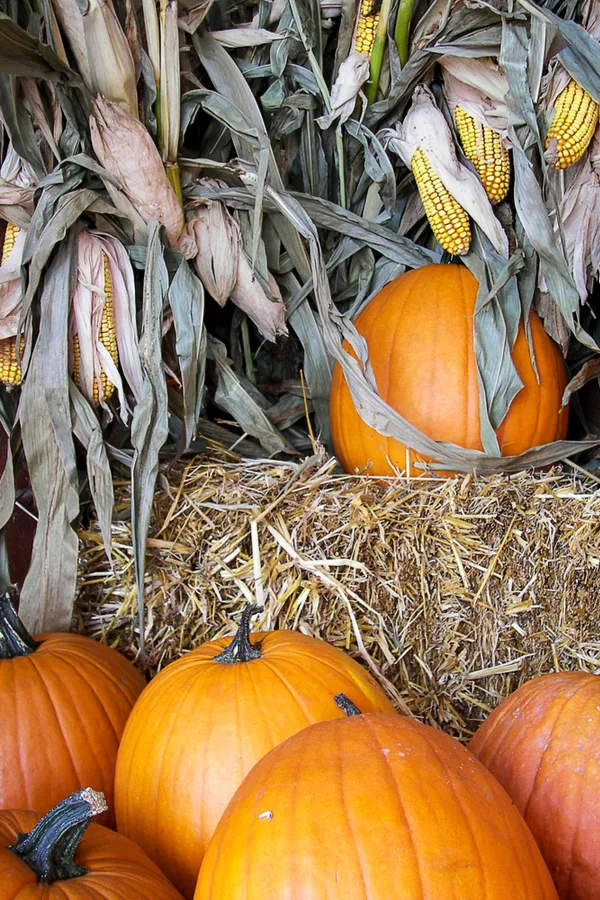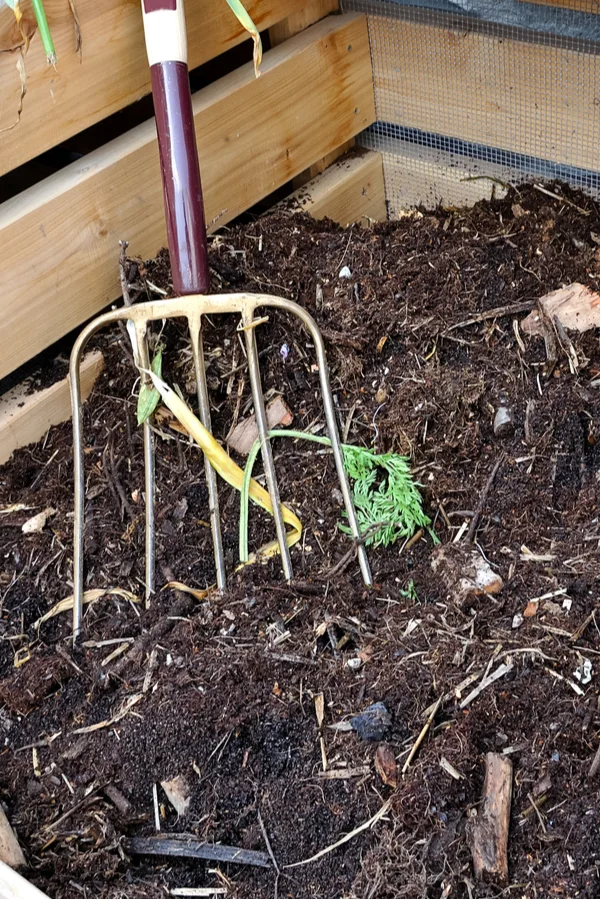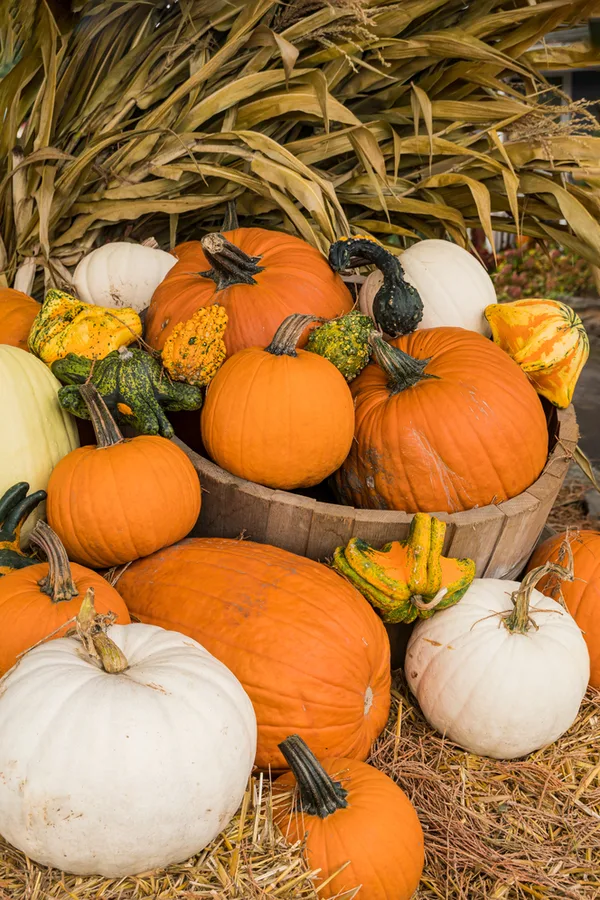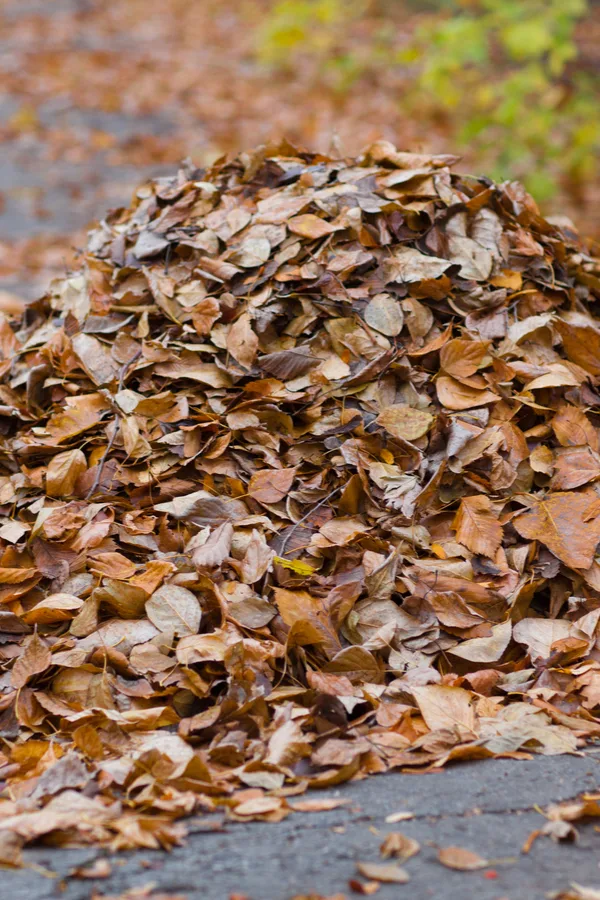Fall is one of the most popular times to decorate your outdoor space with once live plants and products. But did you know that those fall decorations can be used to create an amazing compost pile?
Many people enjoy decorating their front porches and entryways with seasonal fall items. Products such as pumpkins, corn stalks, flowering annuals, and many other assortments of natural items can be used.
Once Thanksgiving is over (or even Halloween), you have no more use for those decorations. Put them to good use in your compost pile!

It’s a great way to help power your garden soil for next year while keeping items out of landfills. Believe it or not, more than three-quarters of these natural decorations end up in local landfills when there is a great alternative!
From gourds and squash to your scarecrow’s straw, you can add it to your compost pile. There are a few tips you should keep in mind though so you can quickly create amazing compost.
Why Create Compost – Amazing Compost From Fall Decorations
In simple terms, compost is basically decayed organic matter that is used as an all-natural fertilizer. It is considered “black gold” for gardeners and for good reason.
As you grow vegetables and flowers, the soil becomes depleted of vital nutrients that plants need in order to grow. If you do nothing to amend the soil for future use, your plants will begin to suffer.
Composting is a great organic way to add nutrients back to your soil. All those broken-down food scraps, plant materials, and other compostable items are full of nutrients that will help replenish the garden soil. In addition, compost is a great way to improve your garden soil’s structure and composition.
While most garden centers and even some big box stores sell compost, it is best when you make it yourself. It is really simple to create. You may even be surprised at what can actually be composted! Think broken-up cardboard boxes, used coffee grounds and tea bags, most kitchen scraps, kleenexes, and even your pet dog’s hair!
To learn more about composting and even get a handy cheat sheet of materials that can and can’t be composted, visit “Learn How To Compost Like A Pro.” You can even find really simple yet attractive compost bins that you can easily make yourself by using 2×4 lumber. (Visit Here to find out more.)

Utilizing Fall Decorations For An Amazing Compost Pile
To make amazing compost, you need a combination of green and brown materials. You need around one part green material to four parts brown materials to make the best kind of compost.
Green materials contain a high amount of nitrogen, which helps to heat up a compost pile. Items such as vegetable peels, green grass clippings, and plant materials are examples of green materials.
Brown materials contain a high amount of carbon, and they help to add oxygen to break down the compost. Items such as cardboard, small twigs, shredded paper, and coffee filters are examples of brown materials.
So considering most fall decorations are natural materials, most are either brown or green materials. Even if you don’t decorate with natural items in the fall, you likely have neighbors who do. These family and friends are likely more than willing to donate their old fall decorations in order to help you create an amazing compost pile. (Maybe just be sure to give them a few juicy tomatoes next summer in return!)
Here’s a look at what items are perfect for adding to your compost pile. In addition, there are a few items you should avoid adding as well as tips on getting the most from your fall decorations.
Pumpkins, Squash & Gourds
Most people at the very least have a couple of pumpkins or jack-o-lanterns adorning their front porch or steps. These items are great for adding green material to your compost.
Pumpkins, squash, and gourds are excellent sources of nitrogen and beneficial bacteria. They break down quickly and can really help to heat up a compost pile.
Make sure you remove as many of the seeds as possible when adding these products to your compost pile. Often, home compost piles can’t get hot enough to kill off most vegetable and fruit seeds. This can, unfortunately, result in unwanted volunteer plants popping up in your garden when you use your compost the next year.
In addition to removing seeds, do not use any jack-o-lanterns that were treated with any type of vaseline or oils to keep them looking fresh. Lastly, also do not add painted or stained pumpkins. Most paints and stains contain harmful chemicals that you don’t near your garden.
Before adding the pumpkins, squash, and gourds to your compost pile, chop them up into smaller pieces to help speed up the decomposition process.

Straw Bales
Straw is one of the best all-natural materials for gardeners to use. Not only is it an excellent brown matter for composting, but straw can also be used to help insulate any of those fall-planted bulbs or vegetables like garlic.
Straw works in your compost pile by helping to retain moisture (also needed for composting) while also adding in an amazing amount of organic matter.
Remove any seed heads (if present) prior to adding them to your compost pile. Then, remove the bale strings and loosen up the flakes before adding.
You can choose to chop up the straw with your mower if available. This helps the straw break down quicker and helps speed up decomposition. It is also useful to add the straw in layers to your compost pile with your other fall decorations in between. (Think of it as a compost lasagna!)
Corn Stalks
Corn stalks are also considered brown material and work similarly to staw in your compost pile. Their fibrous stalks not only add in carbon and organic matter, but the larger stalks help to create air pockets within the compost pile.
The downside to using corn stalks is that it can take months for them to break down if you leave the stalks whole. You really need to chop them down into smaller pieces to give them a head start on decomposing.
Also, you can compost the corn cobs and shucks, but be sure to remove the corn kernels. Save those for feeding to your local squirrels this winter!
Flowering Annuals & Plants
It’s no secret that there are some beautiful flowering annuals and plants displayed during the cooler autumn months. Mums, asters, and ornamental cabbage and kale can make for amazing fall displays when paired with ornamental grasses and other fall decorations.
Whether you have them displayed in hanging baskets or fall planters, many individuals will toss these plants once they start to die off. Most of these potted plants are destined for landfills even though many of them can be planted in the ground for overwintering. (See “How To Save Mums” to learn how to save your mums.)
However, they all are great additions to your compost pile. Their foliage is rich in nitrogen and is a great source of green matter for compost piles. You can add in the soil as well, or you can replenish and reuse the potting soil for future use. (See “How To Recycle Hanging Basket Soil” for more information.)
It is best to deadhead blooms from any plants that you are going to add. The fewer seeds in your compost pile, the better. Remove the plant from the container once you remove the blooms. Break apart and chop up the roots and foliage into smaller pieces and then add to your compost pile.

Bonus Fall “Decoration” – Leaves
Even if you don’t use any of the previously mentioned fall decorations, you likely have trees growing on your property or nearby. Where you have trees, you have a plethora of leaves that have turned colors and have fallen to the ground. While they might not be used as fall decorations, they are still around in abundance this time of year.
These dead leaves are an amazing compostable brown material. The best part: They are completely free! While many people either rake leaves into a pile and burn them or they fill garbage bags and set them out with the trash destined for the landfill, put them to better use! Leaves can be added just as they are into your compost pile or you can chop them up using your mower prior to adding.
Keep in mind, however, that there are some leaves that are better to use than others. Oak leaves tend to be more acidic and should only be added in moderation. In addition, avoid using any byproduct of black walnut or eucalyptus trees, including their leaves. Maple, ash, and fruit tree leaves are the best types to use and can be added in abundance.
To Conclude…
Enjoy your fall decorations while you can. But as soon as you are ready to bust out the tinsel and Christmas lights, put those natural materials to good use. Reduce the number of items in your local landfill and create an amazing compost pile with those fall decorations. Remember, amazing compost equals healthy and nutrient-packed soil for all your plants and vegetables when spring rolls around!
